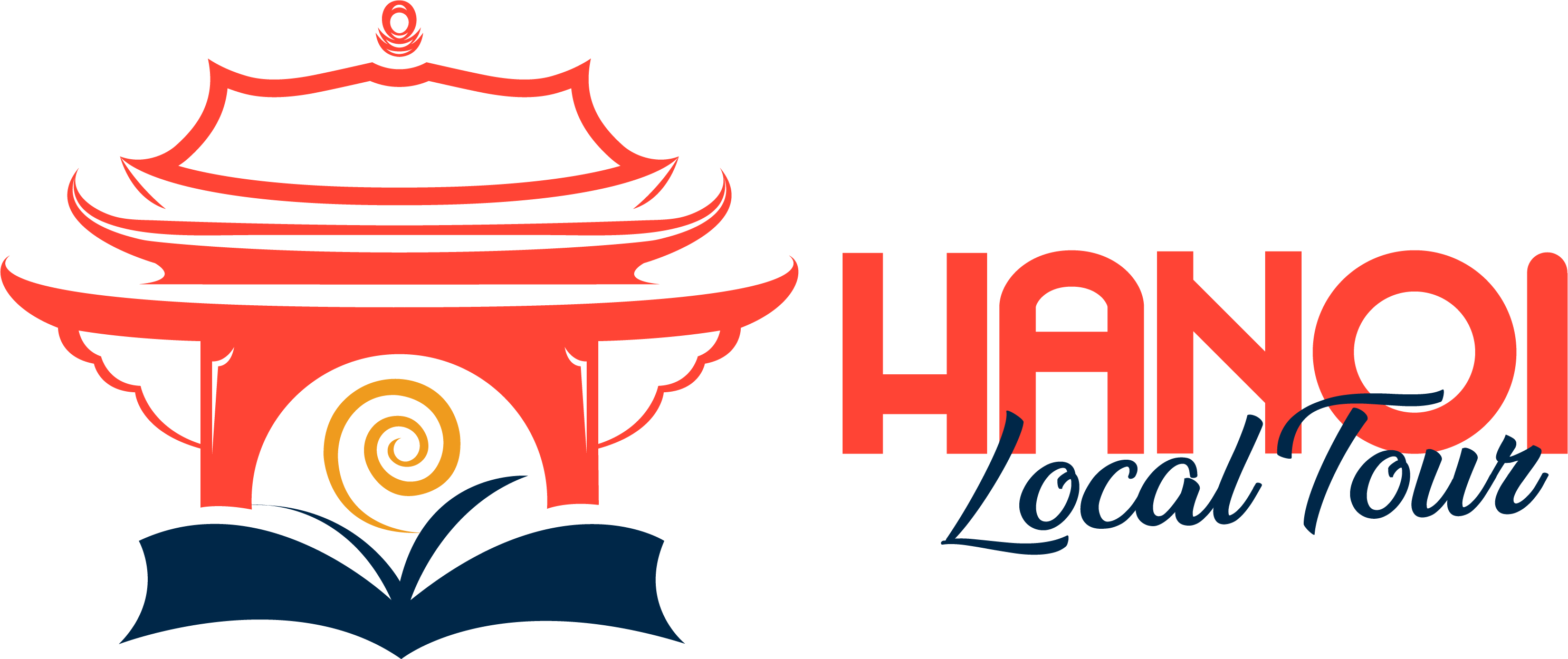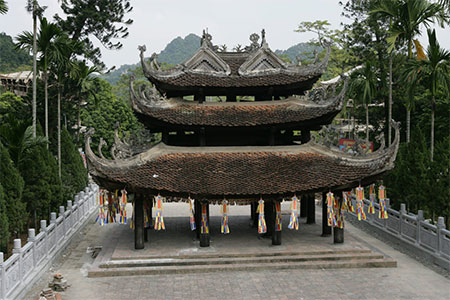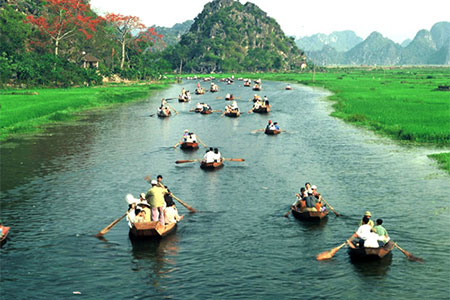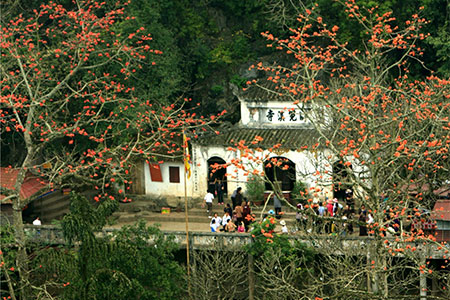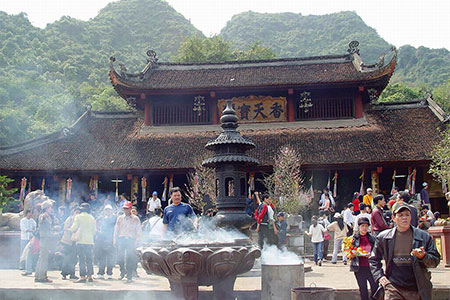Visitors should take a trip to Perfume Pagoda while visiting Hanoi to admire the cultural and religious space of an ancient land associated with the development of Buddhism for hundreds of years.
Perfume Pagoda also known as Huong Son is a destination for traditional spiritual culture of the Vietnamese people. Perfume Pagoda is said in folklore way, in fact, Perfume Pagoda is a cultural – religious complex in Vietnam, including dozens of Buddhist pagoda, some god temples, and pantheon of agricultural beliefs. The relic and scenic complex of Perfume pagoda consists of 18 temples and pagodas, caves scattered in 4 villages named Yen Vi, Duc Khe, Phu Yen and Hoi Xa belonging Huong Son Commune of My Duc district in Hanoi. Perfume Pagoda bears deeply the identities of Vietnam’s Buddhist culture. Since ancient times, there has had the phrase “The sky of Buddha’s scene”. Perfume Pagoda is being nominated as one of the top 10 spiritual attractions in Vietnam.
The temple was built with the main scale in around the end of the 17th century, then was destroyed in the war against France in 1947. In 1988, the pagoda was reconstructed again by the Venerable Thich Vien Thanh under the teaching of the most venerable Thich Chan Ba. Perfume Pagoda is associated with folk religion worshipping Ba holy mother. According to legend, in the first century, this land had Dieu Thien princess called Ba Princess, the embodiment of Avalokitesvara Bodhisattva who practiced the Buddha in 9 years and attained enlightenment to save sentient beings. In March of the year of the Tiger (1770) Trinh Sam Lord wen to Son Nam with his troops. He went to Huong Tich cave, offered incense and sightsaw and wrote on the cliff of cave entrance five words “Nam Thien De Nhat Dong” (the foremost cave under the Southern Heavens). Huong Tich cave was a sacred place, and was complemented by the Lord became more favorable to many people. Because Huong Tich cave worships Bodhisattva Avalokitesvara, the spiritual support of the people to pray for peace and all good things. It can be said that Lord Trinh Sam had let Huong Tich become a huge monument, and also laid the foundation for the development of Perfume Pagoda festival thereafter and until now. Since then, every year when spring came, there is a large number visitors going to the pagoda in festival days. But it was not until 1896 dating, it is officially opened in large scale.
Not only famous for a long history of development, Perfume Pagoda also has reputation of landscape and architecture. The complex of Perfume Pagoda has many architectural buildings scattered in valley of Yen stream. First, the main area is the Ngoai pagoda, also known as the Tro pagoda, and name is Thien Tru Pagoda. The Triple Gem is placed in three large tiled yard. The third courtyard built bell tower with three floors of roof. This is an ancient work with unique appearance since revealing two triangular gables on the top floor. Next, Trinh Temple is a small temple located on the right of Yen stream. This place worships gods who protecting forests, and visitors had to appear there first, a procedure that cannot be ignored when going to Perfume Pagoda. After dedicating offerings at Trinh temple, visitors will be taken to go through Hoi Bridge and some mountains with strange names such as Doi Cheo Mountain, Voi Phuc Mountain, Mam Xoi Mountain. After that, Huong Tich cave is the most impressive thing in the complex of Perfume Pagoda. Then, Van Song Temple, often known as Cua Vong temple, was just a small temple built by Yen Vy villagers in the old time to worship Princess of forest, or Thuong Ngan princess. Forest Princess was honored as a sublime being embodied in the jungle. On the other hand, as worshipping her, villagers hope the princess bless luck for residents when going into the forest for farming, hunting and gathering. Temple is located on high mountains, and the bottom of the mountain is a fairly deep valley, making the valley like a mountain hammock. The ancients based on this geography named the Temple as Cua Vong temple. Besides, you will encounter Giai Oan temple. And, Thien Tru Pagoda located on the shelf of Lao Mountain, was built from the reign of King Le Thanh Tong (1460-1497). According to some historians, King Le Thanh Tong and his troops went through Huong Son mountain and stayed in the valley of Lao mountain and let soldiers cook the rice and eat. While enjoying the natural scenery of Perfume Pagoda, the King saw astronomy and found that this region was in a position of Thien Tru star, therefore, the King named this valley as Thien Tru. The last is two caves, Tien Son and Hinh Bong. On the way to go to these caves, you will appreciate those who have put every stone, stair here to make a path. Up there, you will admire the beautiful scenery, terrain and works.
Noticeably, festivals in Perfume Pagoda is always an attractive thing when visiting this pagoda. Perfume Pagoda Festival is a meeting place of unique cultural activitiesm such as boating, hiking and singing Cheo, Chau Van. On the festival day, Perfume Pagoda is crowded with hundreds of boats. The special feature of Perfume Pagoda is boating – sitting on a boat to explore cultural identity of Vietnamese residents since ancient times. Feel the atmosphere of Buddhist lands and enjoy the beautiful scenery here is an unforgettable experience for visitors when have a day trip in Hanoi.
